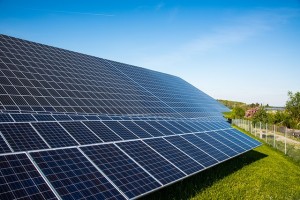 I was driving along highway 401 on the recent mid-term weekend. At Ingleside, Ontario we passed a large solar panel farm on the south side of the road. It’s an impressive facility that is situated on previously underused land, close to the Ontario Hydro power grid. It opened last spring and covers 100 acres. Forty-three thousand solar panels cover the land and provide enough electricity to power 1,800 homes (16.8 gigawats/hour). The private company is now looking for other similar opportunities in Ontario.
I was driving along highway 401 on the recent mid-term weekend. At Ingleside, Ontario we passed a large solar panel farm on the south side of the road. It’s an impressive facility that is situated on previously underused land, close to the Ontario Hydro power grid. It opened last spring and covers 100 acres. Forty-three thousand solar panels cover the land and provide enough electricity to power 1,800 homes (16.8 gigawats/hour). The private company is now looking for other similar opportunities in Ontario.
I was impressed by this facility. A quick look online also revealed that much larger solar parks are becoming quite prevalent across the world, especially in sunnier climates.
The largest are in California’s deserts. Whereas the solar farm I saw near the 401 had 43,000 panels on 100 acres of land, the largest solar farms in California are mammoth – with 1.7 million solar panels over 13 square kilometers. Impressively, a single such facility powers close to 150-thousand homes. Other parks use large mirrors that generate heat – another innovation that channels abundant natural energy available from the sun.
Solar parks of this size are also now emerging in India, Pakistan, China, along with smaller but significant projects across Europe.
So on the eve of the global UN environment conference in Paris – COP 21 – I think we should all investigate the growing application of renewable energy – solar, wind and other natural initiatives such as wave power. They are now becoming significant elements of countries’ national energy infrastructures and priorities. Let’s hope that innovation will continue to present new alternatives and help us to meaningfully diminish our dependence on fossil fuels. – Chris Shannon, Headmaster
